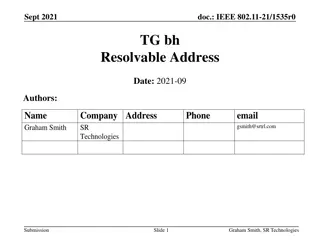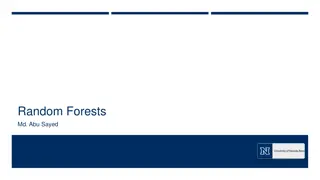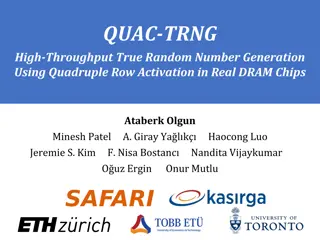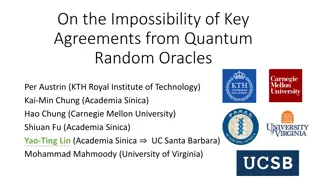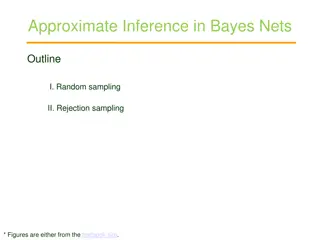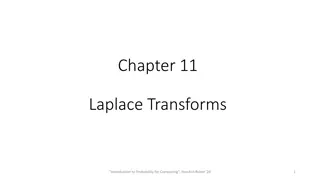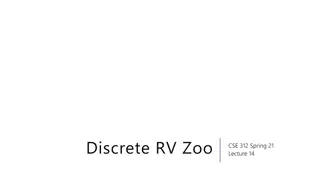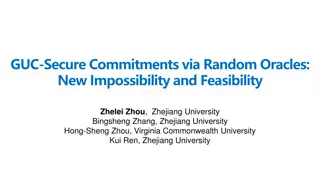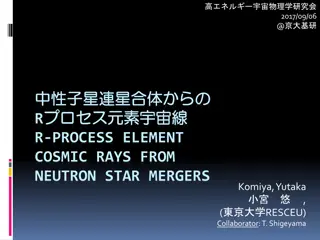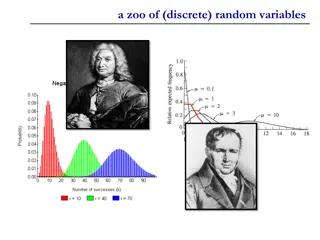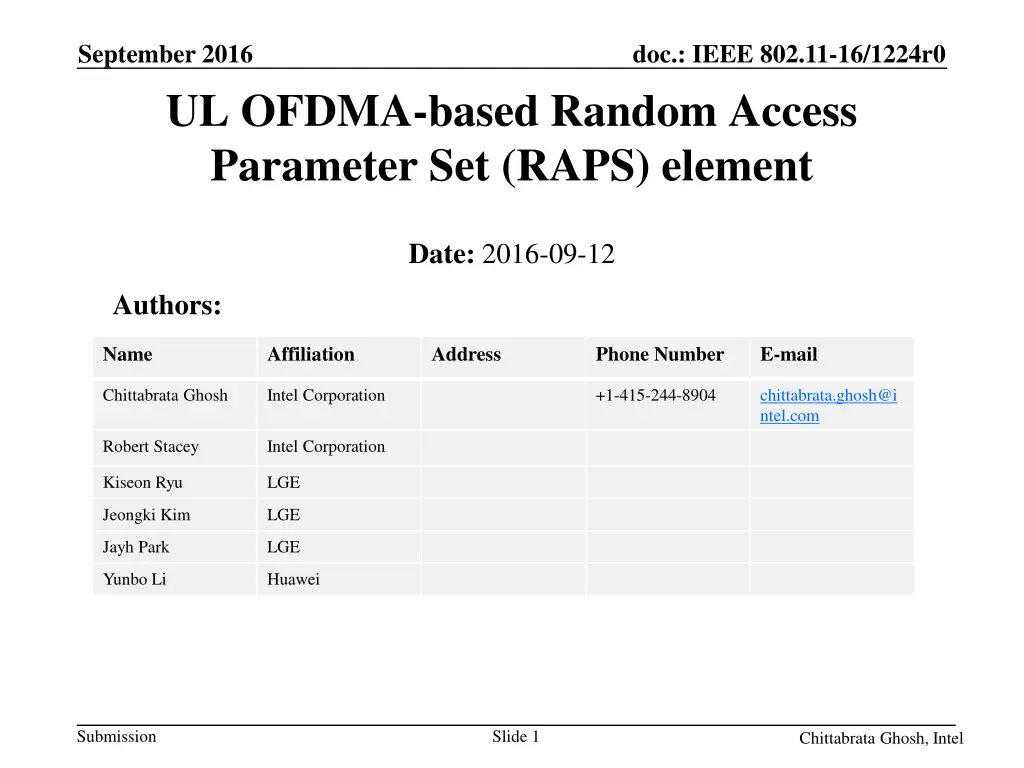
IEEE 802.11-16 Random Access Parameter Set Proposal
"Explore the proposal for a Random Access Parameter Set element in IEEE 802.11-16 standard to facilitate UL OFDMA-based random access operations. The presentation covers signaling parameters and mechanisms for efficient random access transmission."
Download Presentation

Please find below an Image/Link to download the presentation.
The content on the website is provided AS IS for your information and personal use only. It may not be sold, licensed, or shared on other websites without obtaining consent from the author. If you encounter any issues during the download, it is possible that the publisher has removed the file from their server.
You are allowed to download the files provided on this website for personal or commercial use, subject to the condition that they are used lawfully. All files are the property of their respective owners.
The content on the website is provided AS IS for your information and personal use only. It may not be sold, licensed, or shared on other websites without obtaining consent from the author.
E N D
Presentation Transcript
September 2016 doc.: IEEE 802.11-16/1224r0 UL OFDMA-based Random Access Parameter Set (RAPS) element Date: 2016-09-12 Authors: Name Affiliation Address Phone Number E-mail Chittabrata Ghosh Intel Corporation +1-415-244-8904 chittabrata.ghosh@i ntel.com Robert Stacey Intel Corporation Kiseon Ryu LGE Jeongki Kim LGE Jayh Park LGE Yunbo Li Huawei Submission Slide 1 Chittabrata Ghosh, Intel
September 2016 doc.: IEEE 802.11-16/1224r0 Abstract In this contribution, we propose an element for signaling of parameters needed for the operation of UL OFDMA-based random access Submission Slide 2 Chittabrata Ghosh, Intel
September 2016 doc.: IEEE 802.11-16/1224r0 Goal of the presentation The IEEE SFD 11-15/0132r15 mentions about the following mechanism to be defined: An AP indicates the value of OCWmin used by all STAs for the random RU allocation process for the next UL MU OFDMA transmissions. The value of OCWmin is transmitted through a dedicated field in the beacon frame. Submission Slide 12 Chittabrata Ghosh, Intel
September 2016 doc.: IEEE 802.11-16/1224r0 Proposed Comment Resolution CID Page Number Line Number Comment Proposed Change 600 25.10.3 60 48 The standard shall provide a mechanism to change Trigger- based Random access contention parameters on the fly Either introduce a new information element or extend the format of the trigger frame 2384 25.10.3 47 3 OCWmin is used by STA, but the mechanism of delivering OCWmin to STA is not defined. Define Propose to define the parameters for UL OFDMA-based random access in Random Access Parameter Set (RAPS) element Submission Slide 4 Chittabrata Ghosh, Intel
September 2016 doc.: IEEE 802.11-16/1224r0 Proposed Random Access Parameter Set element format Element ID Length Element ID Extension OCW Range Octets 1 1 1 1 We propose the Random Access Parameter Set element (RAPS) with the following subfields Element ID: Defined as in baseline REVmc_6.0 Length: Defined as in baseline REVmc_6.0 Element ID Extension: Defined as in baseline 11ax Draft 0.4 OCW Range: This field indicates the minimum and maximum values of the OCW The RAPS element is carried in Beacon and Probe Response frames Submission Chittabrata Ghosh, Intel Slide 5
September 2016 doc.: IEEE 802.11-16/1224r0 Definition of the OCW Range Field in RAPS element EOCW_min EOCW_max Bits 4 4 EOCW_min: This subfield indicates the minimum value of OCW for first HE Trigger-based PPDU transmission using UL OFDMA-based random access EOCW_max: This subfield indicates the maximum value of OCW for retransmission attempts using UL OFDMA-based random access The values in the EOCWmin and EOCWmax subfields encode the values of OCWmin and OCWmax, respectively, in an exponent form and defined as: OCWmin = 2EOCWmin 1 OCWmax = 2EOCWmax 1 Submission Slide 6 Chittabrata Ghosh, Intel
September 2016 doc.: IEEE 802.11-16/1224r0 Conclusion We proposed the signaling mechanism by defining the RAPS element for operation of UL OFDMA-based random access We have provided the comment resolution to the comments received with respect to the signaling mechanism Submission Slide 7 Chittabrata Ghosh, Intel




